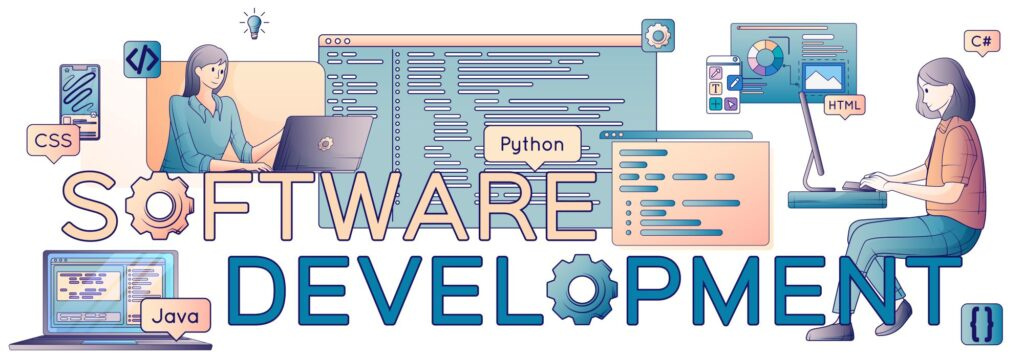In the fast-paced world of web development, JavaScript remains the backbone of interactive websites and applications. By 2025, we have a rich ecosystem of JavaScript libraries that help developers build faster, more scalable, and feature-rich applications. Whether you’re working on the frontend, backend, or handling complex animations, there’s a JavaScript library ready to simplify your work.
Imagine you’re building an interactive, real-time polling app. You need smooth animations, fast data processing, robust authentication, and stunning visual charts. Each part of this app can be powered by some of the best JavaScript libraries available in 2025.
Let’s dive into the most popular and emerging JavaScript libraries across various categories, with real-life use cases and examples.
On This Page
Table of Contents
Top JavaScript Libraries for UI and Frontend Development
Building a great user interface is essential for any web app. Here are the top UI-focused libraries that have stood out in 2025:
1. React
React remains a top choice for building interactive user interfaces. Used by giants like Facebook, Instagram, and Netflix, it’s known for its component-based architecture.
Why Choose React?
- Component reusability
- Virtual DOM for efficient updates
- Rich ecosystem with libraries like React Router and Material-UI
Example: A simple React component:
function Greeting({ name }) {
return <h1>Hello, {name}!</h1>;
}
Real-Life Example: Facebook/Meta uses React to power its feed, ensuring fast updates and interactive components.
2. Vue.js
Vue.js has grown in popularity due to its simplicity and flexibility. It’s often used by startups and smaller companies looking for a lightweight framework.
Why Vue.js?
- Easy to learn
- Two-way data binding
- Extensive official documentation
3. Svelte
Unlike React and Vue, Svelte compiles components at build time, resulting in smaller, faster applications.
Example: A Svelte counter:
<script>
let count = 0;
</script>
<button on:click="{() => count++}">Increment</button>
<p>Count: {count}</p>
Comparison Table: React vs. Vue vs. Svelte
| Feature | React | Vue.js | Svelte |
|---|---|---|---|
| Learning Curve | Moderate | Easy | Easy |
| Performance | High | High | Very High |
| Ecosystem | Extensive | Moderate | Small but growing |
Libraries for State Management
Managing state efficiently is crucial for building complex applications.
1. Redux Toolkit
Redux is still a popular choice, but Redux Toolkit simplifies its configuration.
Key Features:
- Middleware for async actions
- Automatic immutability

2. Recoil
Used by Facebook/Meta , Recoil simplifies state management by allowing atom-based state modeling.
Example:
import { atom, useRecoilState } from 'recoil';
const counterState = atom({ key: 'counterState', default: 0 });
Charting and Data Visualization Libraries
When visualizing data, having a robust charting library is essential.
1. D3.js
Known for its flexibility, D3.js is widely used in data-intensive dashboards.
2. Chart.js
A simple yet powerful library that supports bar, pie, line, and radar charts.
Example: A basic line chart using Chart.js:
const data = {
labels: ['January', 'February', 'March'],
datasets: [{ label: 'Sales', data: [50, 60, 70] }]
};
new Chart(ctx, { type: 'line', data });
Real-Life Example: Companies like Airbnb and Google rely on Chart.js for their dashboards.
Backend and Full-Stack JavaScript Libraries
For server-side development, JavaScript has matured with several powerful libraries.
1. Express.js
Still one of the most widely used backend frameworks for Node.js.
Example: Creating a basic API endpoint:
const express = require('express');
const app = express();
app.get('/api', (req, res) => res.send('Hello from Express!'));
2. NestJS
With TypeScript support, NestJS provides a modular architecture for building scalable server-side applications.
Animation and Interactive Experiences
Creating interactive, visually appealing web apps often requires advanced animation libraries.
1. GSAP
GSAP (GreenSock Animation Platform) is the industry leader in JavaScript animations.
Example:
gsap.to('.box', { x: 100, duration: 1 });
2. Three.js
Three.js enables developers to create 3D experiences.
Form Validation and Data Handling
1. Formik and Yup
Used together, Formik (for form state) and Yup (for validation) are essential tools for managing forms.
Utility Libraries to Simplify Development
1. Lodash
A utility library for handling arrays, objects, and strings.
2. Day.js
Simplifies date manipulation without the bloat of Moment.js.
Security and Authentication Libraries
1. Passport.js
For handling authentication strategies.
2. jsonwebtoken (JWT)
A popular library for token-based authentication.
Testing and Debugging Libraries
1. Jest
Jest is widely used for unit and integration testing.
WrapUP
The JavaScript landscape in 2025 is vibrant, offering countless libraries for every development need. Whether you’re building a single-page application, a data visualization dashboard, or a real-time polling app, the right JavaScript library can make a huge difference. Experiment with these libraries to stay ahead of the curve and deliver cutting-edge web experiences!

FAQs
What is a JavaScript library?
A JavaScript library is pre-written code that helps developers perform common tasks more easily, such as manipulating the DOM, handling animations, or fetching data from APIs.
Why should I use a library like React or Vue?
These libraries simplify building complex user interfaces by providing reusable components and efficient state management.
What makes React popular in 2025?
React remains popular because of its flexibility, virtual DOM for faster updates, and a huge developer community with extensive resources.
Is Vue.js better than React?
Neither is inherently better. Vue is easier for beginners, while React has a larger ecosystem. Your choice depends on your project needs and team familiarity.
What is Svelte, and how is it different from React and Vue?
Svelte compiles code at build time, leading to faster and smaller apps, while React and Vue update the DOM dynamically during runtime.
What does state management mean?
State management helps track changes in a web apps data, ensuring consistent behavior across all components.
Do I still need Redux in 2025?
Redux Toolkit simplifies state management, making it easier than before. However, simpler alternatives like Recoil and Zustand are also popular.
How do I choose the right charting library?
For simple charts, use Chart.js. For advanced, interactive data visualizations, D3.js is a better choice.
Can I use D3.js for dashboards?
Yes! Many companies use D3.js to build interactive, data-driven dashboards because of its flexibility.
What backend libraries are best in 2025?
Express.js is still the go-to option, but NestJS is growing in popularity due to its TypeScript support and modular structure.
What is GSAP used for?
GSAP is the best choice for creating smooth, professional animations in web apps, from simple fades to complex motion effects.
Why should I use Three.js?
Three.js makes creating 3D graphics and immersive experiences in the browser easy, with minimal setup.
How can I validate forms efficiently?
Formik, combined with Yup, is one of the best combinations for handling form state and validation with ease.
What are utility libraries like Lodash used for?
Utility libraries provide ready-made functions for common tasks like array manipulation, deep cloning objects, and string formatting.
How do I handle dates in JavaScript?
Day.js is a lightweight library that makes date handling simple, accurate, and readable.
What is Passport.js used for?
Passport.js helps authenticate users in your app using different methods like social logins (Google, Facebook) or username/password.
What is JWT?
JWT (JSON Web Tokens) are used to securely transmit information between parties and are common in token-based authentication.
Whats new in JavaScript testing in 2025?
Testing tools like Playwright offer better cross-browser testing, while Jest continues to dominate unit testing for JavaScript projects.








